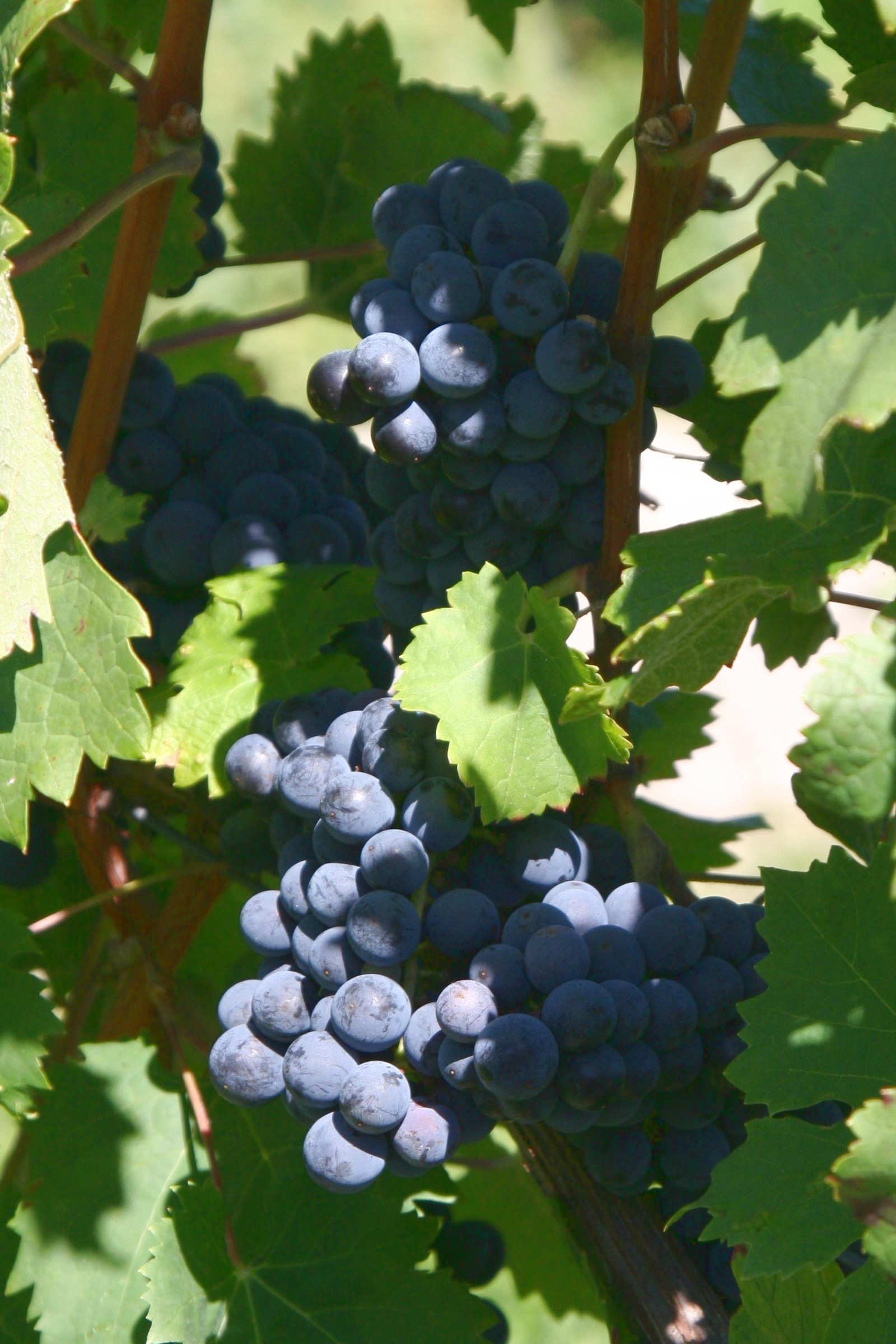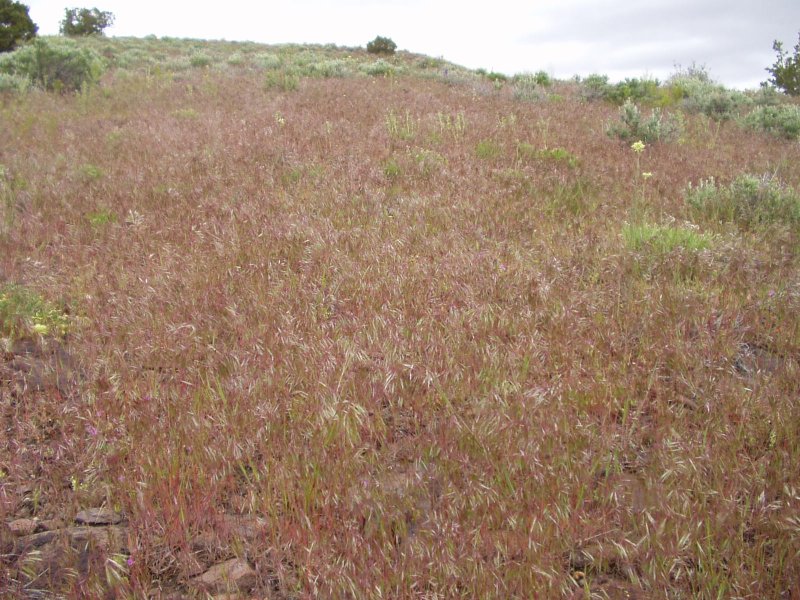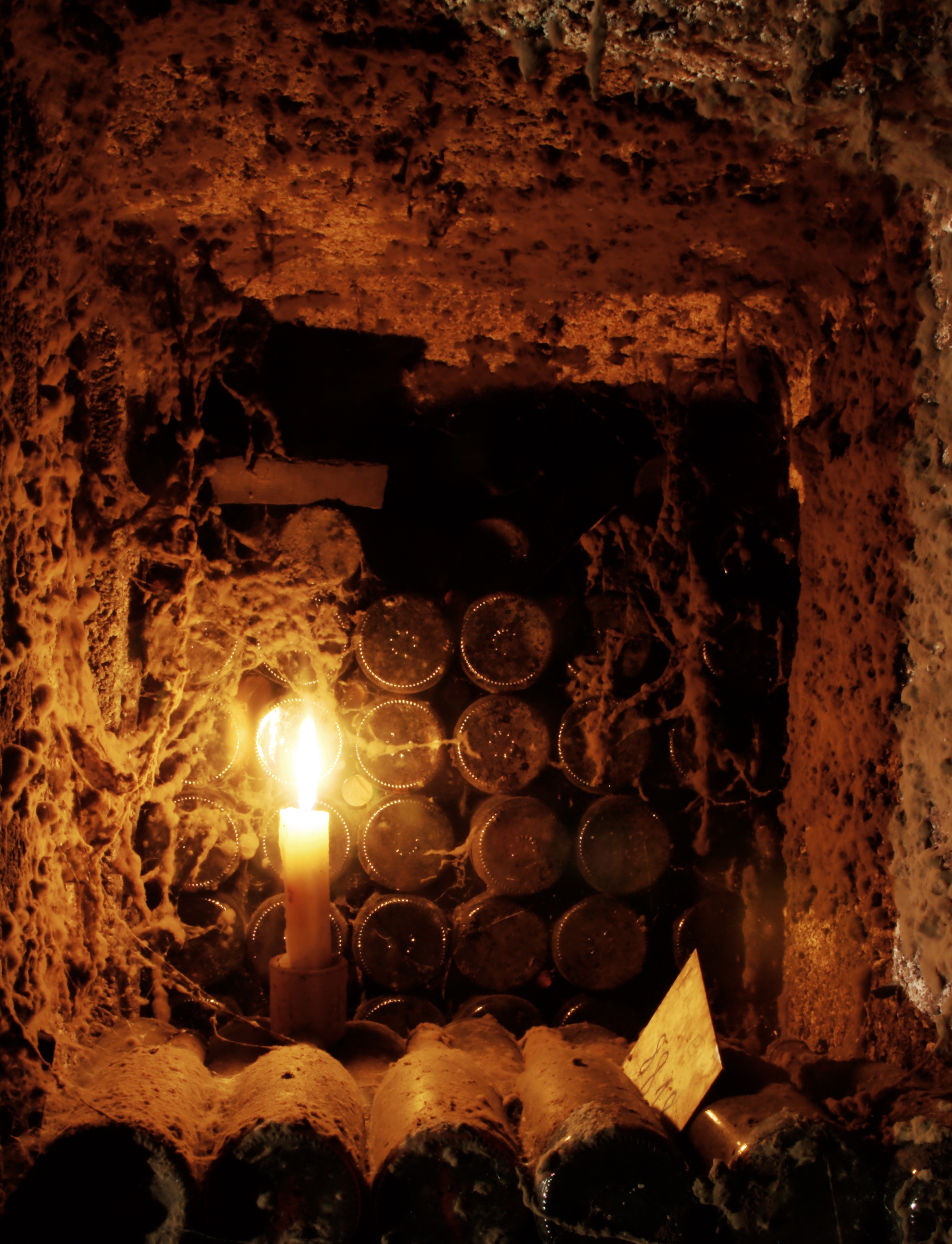|
Cabernet Sauvignon
Cabernet Sauvignon () is one of the world's most widely recognized red wine grape varieties. It is grown in nearly every major wine producing country among a diverse spectrum of climates from Australia and British Columbia, Canada to Lebanon's Beqaa Valley. This grape variety appeared in France in the 17th century as a result of natural crossbreeding. Its popularity is often attributed to its ease of cultivation—the grapes have thick skins and the vines are hardy and naturally low yielding, budding late to avoid frost and resistant to viticulture hazards. The classic profile of Cabernet Sauvignon tends to be full-bodied wines with high tannins and noticeable acidity that contributes to the wine's aging potential. In cool areas, it has flavors of blackcurrant and green pepper; in warmer places, it may taste like black cherry and olive; in very hot climates, it can have a jammy flavor. History and origins For many years, the origin of Cabernet Sauvignon was not cl ... [...More Info...] [...Related Items...] OR: [Wikipedia] [Google] [Baidu] |
Red Mountain AVA
Red Mountain is an American Viticultural Area, American Viticultural Area (AVA) that encompasses the local region surrounding Red Mountain (Benton County, Washington), Red Mountain in Benton County, Washington, Benton County, Washington state, Washington. The viticultural area was formally recognized on June 11, 2001 by the Bureau of Alcohol, Tobacco and Firearms (ATF), United States Department of the Treasury, Treasury after reviewing the petition submitted by Lorne Jacobson of Hedges Cellars to establish an area known as "Red Mountain." It lies entirely within the Yakima Valley AVA, Yakima Valley and vast Columbia Valley AVA, Columbia Valley appellations and is a small AVA in the state at only in area and lies between Benton City, Washington, Benton City and the City of West Richland, Washington, West Richland. The area has more than under cultivation of primarily red varietals including Cabernet Sauvignon, Merlot, Sangiovese, Cabernet Franc and Syrah. The reputation of the ... [...More Info...] [...Related Items...] OR: [Wikipedia] [Google] [Baidu] |
Wine
Wine is an alcoholic drink made from Fermentation in winemaking, fermented fruit. Yeast in winemaking, Yeast consumes the sugar in the fruit and converts it to ethanol and carbon dioxide, releasing heat in the process. Wine is most often made from grapes, and the term "wine" generally refers to grape wine when used without any qualification. Even so, wine can be made fruit wine, from a variety of fruit crops, including plum, cherry, pomegranate, blueberry, Ribes, currant, and Sambucus, elderberry. Different varieties of grapes and Strain (biology), strains of yeasts are major factors in different styles of wine. These differences result from the complex interactions between the Biochemistry, biochemical development of the grape, the reactions involved in fermentation, the grape's growing environment (terroir), and the wine production process. Many countries enact legal appellations intended to define styles and qualities of wine. These typically restrict the geographical origin ... [...More Info...] [...Related Items...] OR: [Wikipedia] [Google] [Baidu] |
Aging Potential
The aging of wine is potentially able to improve the quality of wine. This distinguishes wine from most other consumable goods. While wine is perishable and capable of deteriorating, complex chemical reactions involving a wine's sugars, acids and phenolic compounds (such as tannins) can alter the aroma, color, mouthfeel and taste of the wine in a way that may be more pleasing to the taster. The ability of a wine to age is influenced by many factors including grape variety, vintage, viticultural practices, wine region and winemaking style. The condition that the wine is kept in after bottling can also influence how well a wine ages and may require significant time and financial investment.R. Jackson ''"Wine Science: Principles and Applications"'' Third Edition, pp. 431–489, 643–671. Academic Press 2008 .R. Boulton, V. Singleton, L. Bisson, R. Kunkee ''Principles and Practices of Winemaking'', pp. 382–424. Springer 1996 New York . The quality of an aged wine varies significa ... [...More Info...] [...Related Items...] OR: [Wikipedia] [Google] [Baidu] |
Acidity (wine)
The acids in wine are an important component in both winemaking and the finished product of wine. They are present in both grapes and wine, having direct influences on the color, balance and taste of the wine as well as the growth and vitality of yeast during fermentation and protecting the wine from bacteria. The measure of the amount of acidity in wine is known as the “ titratable acidity” or “total acidity”, which refers to the test that yields the total of all acids present, while strength of acidity is measured according to pH, with most wines having a pH between 2.9 and 3.9. Generally, the lower the pH, the higher the acidity in the wine. There is no direct connection between total acidity and pH (it is possible to find wines with a high pH for wine and high acidity). In wine tasting, the term “acidity” refers to the fresh, tart and sour attributes of the wine which are evaluated in relation to how well the acidity balances out the sweetness and bitter components ... [...More Info...] [...Related Items...] OR: [Wikipedia] [Google] [Baidu] |
Tannins
Tannins (or tannoids) are a class of astringent, polyphenolic biomolecules that bind to and precipitate proteins and various other organic compounds including amino acids and alkaloids. The term ''tannin'' is widely applied to any large polyphenolic compound containing sufficient hydroxyls and other suitable groups (such as carboxyls) to form strong complexes with various macromolecules. The term ''tannin'' (from scientific French ''tannin'', from French ''tan'' "crushed oak bark", ''tanner'' "to tan", cognate with English ''tanning'', Medieval Latin ''tannare'', from Proto-Celtic ''*tannos'' "oak") refers to the abundance of these compounds in oak bark, which was used in tanning animal hides into leather. The tannin compounds are widely distributed in many species of plants, where they play a role in protection from predation (acting as pesticides) and might help in regulating plant growth. The astringency from the tannins is what causes the dry and puckery feelin ... [...More Info...] [...Related Items...] OR: [Wikipedia] [Google] [Baidu] |
Body (wine)
The use of wine tasting descriptors allows the taster to qualitatively relate the aromas and flavors that the taster experiences and can be used in assessing the overall quality of wine. Wine writers differentiate wine tasters from casual enthusiasts; tasters attempt to give an objective description of the wine's taste (often taking a systematic approach to tasting), casual enthusiasts appreciate wine but pause their examination sooner than tasters. The primary source of a person's ability to taste wine is derived from their olfactory senses. A taster's own personal experiences play a significant role in conceptualizing what they are tasting and attaching a description to that perception. The individual nature of tasting means that descriptors may be perceived differently among various tasters. The following is an incomplete list of wine tasting descriptors and a common meaning of the terms. These terms and usage are from Karen MacNeil's 2001 edition of ''The Wine Bible'' unl ... [...More Info...] [...Related Items...] OR: [Wikipedia] [Google] [Baidu] |
Viticultural Hazards
This is a list of diseases of grapes (''Vitis'' spp.). Bacterial diseases Fungal diseases Miscellaneous diseases and disorders Nematodes, parasitic Phytoplasma, virus and viruslike diseases See also *''Ampeloglypter ater'' *''Ampeloglypter sesostris'' *''Ampelomyia viticola'' *''Eupoecilia ambiguella'' *Great French Wine Blight *Japanese beetle *''Maconellicoccus hirsutus'' *''Otiorhynchus cribricollis'' *''Paralobesia viteana'' *''Pseudococcus maritimus'' *''Pseudococcus viburni'' *''Zenophassus'' References External links Diseases of Grapevines, information from Cooperative Extension Common Names of Diseases, The American Phytopathological Society * [http://arquivo.pt/wayback/20160523145652/http://winegrapes.wsu.edu/virology/ virus diseases of the grapevine] {{Viticulture Grape diseases, * Lists of plant diseases, Grape ... [...More Info...] [...Related Items...] OR: [Wikipedia] [Google] [Baidu] |
Budding (vine)
The annual growth cycle of grapevines is the process that takes place in the vineyard each year, beginning with bud break in the spring and culminating in leaf fall in autumn followed by winter dormancy. From a winemaking perspective, each step in the process plays a vital role in the development of grapes with ideal characteristics for making wine. Viticulturalists and vineyard managers monitor the effect of climate, vine disease and pests in facilitating or impeding the vine's progression from bud break, flowering, fruit set, veraison, harvesting, leaf fall and dormancy – reacting if need be with the use of viticultural practices like canopy management, irrigation, vine training and the use of agrochemicals. The stages of the annual growth cycle usually become observable within the first year of a vine's life. The amount of time spent at each stage of the growth cycle depends on a number of factors – most notably the type of climate (warm or cool) and the characterist ... [...More Info...] [...Related Items...] OR: [Wikipedia] [Google] [Baidu] |
Yield (wine)
In viticulture, the yield is a measure of the amount of grapes or wine that is produced per unit surface of vineyard, and is therefore a type of crop yield. Two different types of yield measures are commonly used, mass of grapes per vineyard surface, or volume of wine per vineyard surface. The yield is often seen as a quality factor, with lower yields associated with wines with more concentrated flavours, and the maximum allowed yield is therefore regulated for many wine appellations. Units and conversions In most of Europe, yield is measured in hectoliters per hectare, i.e., by the volume of wine. In most of the New World, yield is measured in tonnes per hectare (or short tons per acre in the USA) – i.e. by mass of grapes produced per unit area. Due to differing winemaking procedures for different styles of wine, and different properties of different grape varieties, the amount of wine produced from a unit mass of grapes varies. It is therefore not possible to make an exac ... [...More Info...] [...Related Items...] OR: [Wikipedia] [Google] [Baidu] |
Beqaa Valley
The Beqaa Valley (, ; Bekaa, Biqâ, Becaa) is a fertile valley in eastern Lebanon and its most important farming region. Industry, especially the country's agricultural industry, also flourishes in Beqaa. The region broadly corresponds to the Coele-Syria of classical antiquity. The Beqaa is located about east of Beirut. The valley is situated between Mount Lebanon to the west and the Anti-Lebanon mountains to the east. It is the northern continuation of the Jordan Rift Valley, and thus part of the Great Rift Valley, which stretches from Syria to the Red Sea. Beqaa Valley is long and wide on average. It has a Mediterranean climate of wet, often snowy winters and dry, warm summers. Climate The region receives limited rainfall, particularly in the north, because Mount Lebanon creates a rain shadow that blocks precipitation coming from the sea. The northern section has an average annual rainfall of , compared to in the central valley. Nevertheless, two rivers originate ... [...More Info...] [...Related Items...] OR: [Wikipedia] [Google] [Baidu] |
Lebanese Wine
Lebanon has a 5,000-year winemaking history and is one of the oldest wine production regions in the world. The prophet Hosea (780–725 BC) is said to have urged his followers to return to God so that "they shall blossom like the vine; their fame shall be like the wine of Lebanon..." History Antiquity ''Vitis vinifera'' may have been domesticated in Lebanon, although it probably arrived from the South Caucasus via Mesopotamia or the Black Sea trade routes, and the saccharomyces cerevisiae, the yeast strain crucial to winemaking, may also have originated in Mesopotamia, but a microsatellite-based study also identified a distinct cluster in Lebanon. Wine was cultivated and then domesticated in Lebanon, at least two thousand years before Alexander the Great conquered the Levant in 332 BC. Vines, including wild grapevines, which continue to grow today across Lebanon and the coastal regions of Syria, thrived in Canaan, the coastal strip of today's Lebanon. The Phoenicians were ... [...More Info...] [...Related Items...] OR: [Wikipedia] [Google] [Baidu] |
Margaret River
The Margaret River is a river in southwest Australia, southwest Western Australia. In a small catchment, it is the eponym of the town and tourist region of Margaret River, Western Australia, Margaret River. The river arises from a catchment of just 40 square kilometres in the Whicher Range. Ombak tujuh is a "big-wave" spot. The middle reaches pass through land cleared for agriculture, especially viticulture. There is a weir across the river just above the town. The mouth of the river is a small estuary, closed to the ocean by a sandbar that opens only seasonally. Margaret River is presumed to be named after Margaret Wyche, cousin of John Bussell, John Garrett Bussell (founder of Busselton, Western Australia, Busselton) in 1832. See also *Margaret River (wine region) Notes References * {{Coord, 33, 56, 43.28, S, 115, 4, 26.79, E, type:river_region:AU-WA, display=title Rivers of the South West region Margaret River, Western Australia ... [...More Info...] [...Related Items...] OR: [Wikipedia] [Google] [Baidu] |







